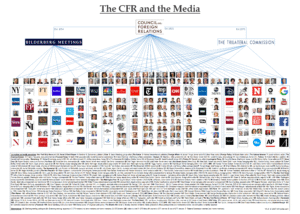Behind the polite language of law reviews and newsrooms lies a coordinated campaign that smears dissidents, pre-decides guilt, and keeps the public inside one narrative. Here are the receipts—so readers can judge for themselves.
What Stands Out (Based on the Paper’s Introduction & TOC)
1) Framing the Movement as “Disease”
Netolitzky compares alternative governance movements (e.g., Queen Romana Didulo, Kevin Annett, others) to an “old disease.” This metaphor sets the tone: these groups are not treated as political or social phenomena for neutral study, but as a pathology to be contained. See the “disease” framing and “potential of violence” premise in the article text and abstract.
2) Categorization of “Second-Wave” Pseudolaw
He divides Canadian groups into buckets—“alternative/replacement governments,” “Magna Carta lawful rebellion,” “self-designated Indigenous groups,” and “new gurus.” Queen Romana is grouped under alternative/replacement governments. The taxonomy collapses important differences in aims, claims, and conduct.
3) Predetermined Conclusions by Label
By branding everything “pseudolaw,” the analysis avoids recognizing any legitimate grievances or political motivations. The methodology leans on court files, policing narratives, and press coverage—sources that carry institutional bias.
4) Violence as the Lens
The paper’s self-described aim is to probe “the potential of violence.” This primes readers to expect danger, even where evidence is anecdotal or non-representative.
5) Professional Position of the Author
As Complex Litigant Management Counsel, the author’s day job is literally to manage and suppress what courts deem “vexatious” or “OPCA” litigants. He is both a researcher and a legal enforcer—his conclusions reinforce his office’s mandate.
Implication: This article is part of a larger narrative infrastructure—academics, media, and law enforcement briefings—that pre-labels dissidents as delusional, dangerous, or criminal. The “disease” frame makes it easier to dismiss claims without investigating them. Bundling unlike groups together muddies distinctions and makes everything sound equally fringe.
The Disease Narrative: A Very Old Trick
Labeling dissent as a pathology is historically common. During the Cold War, U.S. Senate investigations documented intelligence abuses that distorted media narratives; see the Church Committee’s official overview of CIA/FBI/NSA activities. In 1996, the Senate held a dedicated hearing on the CIA’s use of journalists and clergy in operations, a public record that underscores how “neutral” institutions can be enlisted into narrative warfare. When you begin with “disease,” you foreclose the possibility that grievances are grounded in fact or law.
Predetermined Conclusions: How “Pseudolaw” Shuts Down Grievances
Once a community is labeled “pseudolaw,” its claims are treated as unserious by default. Instead of asking whether specific legal errors, overreach, or rights issues exist, the conversation moves straight to containment. That’s not scholarship; it’s category management. A neutral approach would segment groups, test claims independently, and separate speech from action.
Violence Narrative vs. Reality on the Ground
Media and research emphasize a potential for violence. Reality is mixed: there are heated confrontations, and there are also streams of peaceful rallies, community aid, and lawful petitioning—often ignored because it doesn’t fit the “danger” angle. Readers deserve both sides: the charges and the context.
Headlines vs. Primary Material
-
- Global News video page on Peterborough charges & broadcast coverage::
Main Stream Media Narrative
- Global News video page on Peterborough charges & broadcast coverage::
- Full broadcast clip for context (embedded below):
VS.
-
- Movement’s own messaging by Real People reporting from the ground and HRM Queen Romana the 1st Cease & Desist Order and Royal Decrees (primary channel and website):
-
- Links to other boots on the ground real truths
The Peoples Lawful Citizens Arrest Telegram Channel
HRM Queen Romana the 1st Live Daily QRTRV News, Royal Decrees and more truths – Telegram Channel.
HRM Queen Romana the 1st Royal Decrees @ TheKingdomOfCanada.ca
Coordinated Narratives: Academia, Media, Courts
When the same labels—“pseudolaw,” “cult,” “paper terrorist”—recur across institutions, you’re looking at an echo system, not coincidence. Scholars brief security audiences; newsrooms quote scholars; courts cite news narratives. Each node validates the other, and public judgment is outsourced to the loop.
Who Benefits? Funding, Careers, and Institutional Incentives
Security-aligned research attracts grants and visibility; sensational headlines draw clicks; courts charged with “complex litigant” management find comfort in taxonomies that pre-sort entire communities as pathology. Even without cartoonish “suitcases of cash,” incentives align toward one outcome: a closed loop that rewards the disease frame.
Historical records make plain how intelligence and state actors have influenced journalism and scholarship. See the official U.S. Senate overview of the Church Committee, and the public record of the 1996 hearing on CIA’s use of journalists and clergy (full PDF available on that page). These are not rumors; they’re receipts.
Historical Parallels: From Mockingbird to “Counter-Extremism”
Operation Mockingbird (a shorthand for a cluster of Cold War programs) is often invoked loosely, but the record is clear on state influence over media. Post-9/11 “terrorism studies” and contemporary “counter-extremism” initiatives similarly channel funding and career prestige toward one story arc: dissent equals danger. Today, that frame is being redeployed domestically.
Case Study: Queen Romana—Claims, Consequences, and Coverage
Claims & Decrees. Public posts and forwarded decrees in Telegram channels include orders about governance, payments, and loyalty. Press reporting has documented followers who stopped paying utilities or mortgages after interpreting those decrees literally.

Police Confrontations. In August 2022, several followers were charged outside the Peterborough Police Service after attempting “citizen’s arrests” of officers. See Global News video and follow-up report for mainstream framing; compare with full-context clips and community posts.
Alleged Harm to Followers. Journalists compiled cases of evictions/foreclosure and utility shutoffs after people stopped paying bills because they believed decrees voided obligations. See coverage such as utility-payments story and a home-loss profile. Telegram also labeled the account as “fake/impersonation” at one point; see coverage of the label (linking for reader verification).
Escalatory Rhetoric (as reported). Some reports highlight incendiary statements attributed to Didulo—e.g., a notice encouraging violent responses to migrants—covered here for the record so readers can evaluate the claims:
- Vice News report page:
Main Stream Media Narrative.
VS.
- Movement’s own messaging by Real People reporting from the ground and HRM Queen Romana the 1st Cease & Desist Order and Royal Decrees (primary channel and website):
HRM Queen Romana the 1st Telegram.
HRM Queen Romana the 1st Royal Decrees
Implications & the Criminality of Narrative Control
Call dissent a disease, and you never have to answer its questions. The system can then pre-justify surveillance, deplatforming, financial penalties, and reputational erasure. Meanwhile, any criminality inside state-aligned operations is laundered through “expert consensus” and repeated until it becomes “what everyone knows.” Readers deserve to see everything: the decrees, the videos, the police charges, the academic briefs, and the funding trails that keep these frames in place.
The People Must ask themselves, WHO CONTROLS WHAT WE SEE AND THINK?



What This Means—and What to Do Next
For readers: verify firsthand. Watch the clips, read the decrees, compare headlines with primary posts, and look at who benefits when certain frames dominate. If you have ground-truth evidence—video, documents, data—send it and keep truth alive https://aitruthnews.com/get-involved.html.

